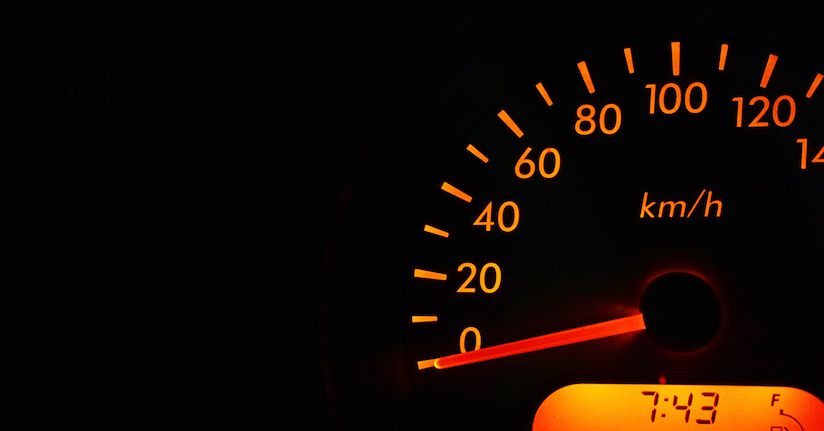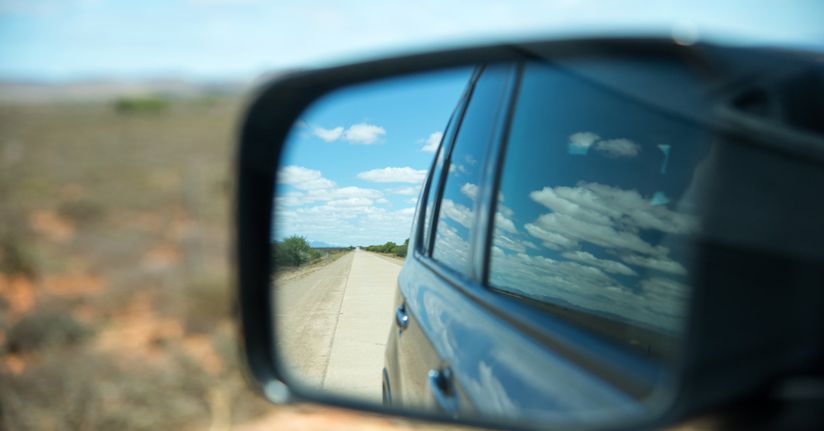Night Driving: Tips to Reduce Glare, Light Sensitivity and Migraines
When you have from light sensitivity, driving at night can be a serious challenge. Headlights from oncoming traffic, flashing brake lights or turn signals, and light/dark contrast are often reported as triggers, which can leave you struggling to keep your eyes on the road--or worse, result in a migraine attack, headache or other health related problem. These tips for reducing the negative impact of light while driving at night, however, can make a big difference in your ability to successfully get behind the wheel.
1. Keep your car clean
Your windshield and mirrors will distribute light better if they are clean and free of dirt and smudges. Take the time to clean your windows, whether you choose to take the car through a car wash or do it yourself with a mixture of vinegar and water. Be careful to wipe away post-wash streaks—especially as they may not be as visible during the day—so that they won't interfere with your vision or create further glare.
2. Add anti-reflective coating to your glasses.
This thin coating can help protect your eyes from reflections and make it easier to see what's happening on the road. Talk with your eye doctor to determine whether or not this is a reasonable solution for you.
3. Swap to the night setting.
Have you ever been blinded suddenly by a car coming up behind you? You may be surprised to learn that you can minimize the impact of this by using the night setting of your rear view mirror. Look for the little switch below or beside your mirror and flip it to the "night" setting at night. Make sure you know where that setting is so that you can change it quickly if needed.

4. Dim the interior lights of your vehicle.
Sometimes the stark contrast of dark and light alone can make things seem brighter than they are and ultimately bring on episodes of light sensitivity and photophobia. Luckily, many cars offer dimming capabilities for interior and dashboard lights to help reduce this effect. Consult your manual to determine how you can activate this feature in your vehicle.
5. Blocking out digital billboards.
Okay this one may be a little tough to get around, and good luck if you’re driving in Times Square in New York City. However, there may be a few options for blocking out huge digital billboards that are brightly lit. Dropping the sun visor is an easy way to help obscure all or part of it, and you could also play with lane positioning. If you are in the lane closest to the billboard, you might be able block it out more significantly as it passes overhead (and also out of view of your side windows) but its bright light may be more pronounced. On the other hand, staying in the lane furthest away may reduce the impact of its brightness but could also keep it in your peripheral vision longer. Figure out your sweet spot and stay in your lane...literally.
6. Check the windshield wipers.
This is deserving of its own category. Not only should you keep these clean and remove any debris (foliage, grime, etc.), but you should also make sure they are functioning properly. If left unattended, these wipers can be a prime culprit for leaving streaks and other marks that worsen glare and light reflection.
7. Be kind on the road.
When you're following another driver or pulling up behind one, make sure that you have only turned on your low beams. Not only will it reduce glare for them, it will help prevent oncoming drivers from flashing their brights at you!
8. Keep moving your eyes.
It is easy to keep your eyes focused on a single fixed point, especially if you're taking a long trip or you're focused on your destination. Instead, try moving your eyes from side to side. Scan the sides of the road. It will keep you more aware of potential hazards like kids and animals, and it will also keep your eyes relaxed and adjusted to your surroundings.
9. Dodge those high beams.
If an oncoming car clearly has their high beams on, it has been recommended by many experts to look down and to your right in an effort to avoid the direct hit of brightness. Keep your eyes on the painted marks of the road or lane lines. This will allow you to avoid being blinded by the bright light but still keep your car traveling smoothly and safely in the right direction.

10. Adjusting your side mirrors.
Experts at AAA note that properly aligned side mirrors can minimize blind spots and also reduce the impact of glare from surround vehicles. Here is what they recommend for setting the right position:
“Properly aligned mirrors not only reduce blind spots, they also reduce glare from vehicles behind you. While sitting in the driver's seat, lean to the left and tilt your head until it rests against the window. From that position, adjust the driver's side mirror so you can just see the left rear corner of the vehicle.”
11. Take regular breaks.
If you have to take a long drive at night, make sure you swap drivers frequently or take plenty of breaks to relax your eyes. If you're going to be driving through the day and need to continue driving as night falls, take a break until your eyes adjust so that you'll be in a better position to drive effectively.
Bonus tip: Try Night-Driving TheraSpecs glasses
In most cases, the TheraSpecs standard indoor tint is not legal for night driving. However, we can do an “extra light” application of our precision tint with anti-reflective coating to help combat the nasty lights and glare of driving at night. These specialty lenses in one of our frames only cost an additional $20 per pair (non prescription, no additional coatings), depending on the chosen frame style. The AR coating will add $45 to the final price. Note: These are special ordered through our optical lab, which means it can take approximately 3 weeks before they are completed.
You can order "extra light" / night driving lenses in one of our frames by filling out the form at https://www.theraspecs.com/extra ➜
If you’re interested in ordering the extra light tint with prescription lenses and/or in a frame you send us, just reach out to our customer care team at contact@theraspecs.com to learn more.
Preventing migraine attacks, headaches, and eye strain while driving at night can be a challenge, especially if you're light sensitive. However, by following these critical tips, you can reduce the glare you'll have to deal with and make your drive smoother, easier, and less stressful.
TheraSpecs Glasses for Light Management
Try our light-filtering glasses and stay protected against harsh light from screens, fluorescents, LEDs, unwanted blue light, bright sunlight, flashing lights, and more.





